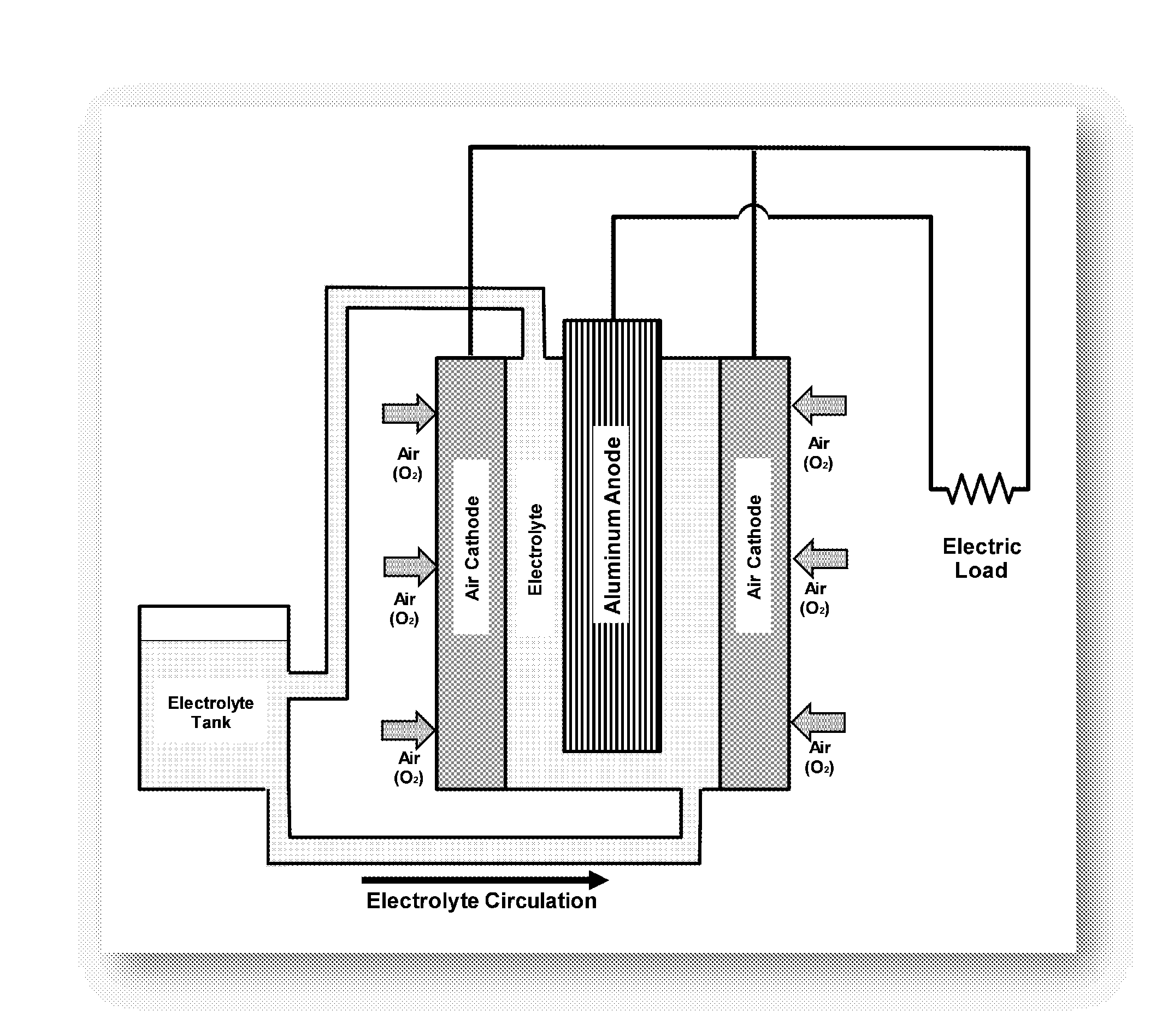Method for regenerating alkaline solutions
a technology of alkaline solutions and alkali solutions, applied in the direction of reclaiming serviceable parts, primary cell maintenance/service, secondary cell servicing/maintenance, etc., can solve the problems of battery power limitation, battery power limitation, and not always practicable operation
- Summary
- Abstract
- Description
- Claims
- Application Information
AI Technical Summary
Benefits of technology
Problems solved by technology
Method used
Image
Examples
example 1
Hydrolysis of Spent Electrolyte—Liquid Phase Composition of Treated and Non-Treated Electrolyte
[0065]The following experiments were carried out to demonstrate the effect of water addition to spent electrolyte solution of aluminum-air battery.
[0066]In the first experiment (comparative, non-treated), 100 ml of spent electrolyte solution having 147 g / L of aluminate (as Al) was added to a plastic can. The can was closed and allowed to stand at room temperature for a period of approximately 180 hours.
[0067]In the second experiment (water treated), 100 ml of the same spent electrolyte solution (147 g / L of dissolve Al) was added to a plastic can, followed by the addition of water (40 ml). The so-formed solution was stirred for two hours. The can was closed and allowed to stand at room temperature for a period of approximately 180 hours.
[0068]The two K[Al(OH)4] solutions were sampled periodically during the 180 hours storage period and the concentration of aluminum dissolved in the aqueous ...
example 2
Hydrolysis of Spent Electrolyte Solid Phase Characterization
[0071]The white precipitate formed in the K[Al(OH)4] solution, following water addition, as set forth in Example 1, was separated by filtration. XRD analysis indicates that the isolated solid is the gibbsite (sometimes called hydrargillite) form of aluminum hydroxide. FIG. 6 shows the X-ray powder diffraction pattern of the product. A particle size distribution of the so-formed aluminum hydroxide is depicted in FIG. 7, indicating that the particle size is in the range from 1 to 10 μm.
example 3
The Complete Cycle of Spent Electrolyte Regeneration by Hydrolysis (Water Only)
[0072]FIG. 8 is a bar diagram showing typical changes occurring in the compositions of aqueous and solid phases used and generated on running the process of the invention on a laboratory scale. Each bar illustrates the distribution of components within the starting material / intermediates / products under consideration. Starting from left to right, the first and second bars represent the composition of a fresh potassium hydroxide solution (30 w / w, 1 kg total weight), and a spent electrolyte solution withdrawn from an aluminum / air battery. The third bar illustrates the composition of the system following water addition. It is noted that volume increase due to water addition is accompanied by a significant increase of the solid phase formed in the system due to K[Al(OH)4] hydrolysis, which leads to aluminum hydroxide precipitation. The fourth bar illustrates the composition of a wet cake that had been separate...
PUM
| Property | Measurement | Unit |
|---|---|---|
| volume | aaaaa | aaaaa |
| structure | aaaaa | aaaaa |
| gas permeability | aaaaa | aaaaa |
Abstract
Description
Claims
Application Information
 Login to View More
Login to View More - R&D
- Intellectual Property
- Life Sciences
- Materials
- Tech Scout
- Unparalleled Data Quality
- Higher Quality Content
- 60% Fewer Hallucinations
Browse by: Latest US Patents, China's latest patents, Technical Efficacy Thesaurus, Application Domain, Technology Topic, Popular Technical Reports.
© 2025 PatSnap. All rights reserved.Legal|Privacy policy|Modern Slavery Act Transparency Statement|Sitemap|About US| Contact US: help@patsnap.com



